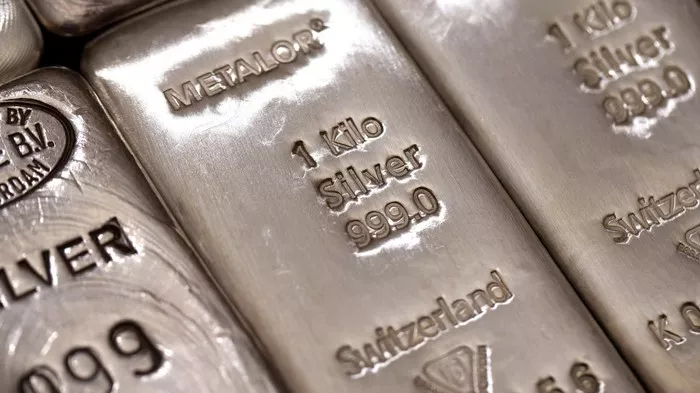The history of silver as a precious metal and commodity dates back centuries, making it a significant asset in the global financial market. Over time, silver prices have experienced various cycles and trends influenced by a multitude of factors, including economic conditions, geopolitical events, and market sentiment. Examining the historical movements and cycles of silver prices provides valuable insights into the behavior of this dynamic commodity and helps market participants anticipate potential future trends.
1. Ancient and Medieval Periods
Silver has been used as a medium of exchange and a store of value for thousands of years. In ancient civilizations such as the Mesopotamian, Greek, and Roman empires, silver was widely accepted as a form of currency. Its relative scarcity and durability contributed to its value, making it a preferred medium for trade and commerce. During the medieval period, the expansion of trade routes and the emergence of global markets further increased the demand for silver, leading to fluctuations in its price.
2. Colonial Era and Industrial Revolution
The colonial era marked a significant increase in silver production, particularly in regions such as South America, where large silver mines were discovered and exploited. The influx of silver into Europe and other parts of the world led to a shift in global trade dynamics and the establishment of silver as a key component of international commerce. Furthermore, the onset of the Industrial Revolution heightened the demand for silver, especially in the manufacturing of various industrial goods and currency systems.
3. Silver Standard and 20th-century Fluctuations
The adoption of the silver standard in various economies during the 19th century, alongside the gold standard, further influenced the global price of silver. The fluctuations in supply and demand, coupled with changes in monetary policies, impacted the value of silver in the international market. The 20th century witnessed significant price fluctuations due to various geopolitical events, economic recessions, and the emergence of new technologies, all of which affected the demand for and supply of silver.
4. Late 20th Century to Present
In the late 20th century and into the 21st century, silver prices experienced notable volatility and significant price movements. The increased focus on silver as an investment asset, along with its continued industrial applications, contributed to heightened price fluctuations. The global financial crises, geopolitical tensions, and the rise of emerging markets also influenced the demand for silver, leading to both bullish and bearish trends in the market.
5. Understanding Price Cycles in the Silver Market
The silver market is subject to cyclical movements driven by various factors, including supply and demand dynamics, macroeconomic indicators, and market sentiment. Understanding these price cycles is essential for traders and investors aiming to capitalize on potential opportunities and effectively manage risks in the silver market. Some key aspects of price cycles in the silver market include:
Boom and Bust Cycles: Periods of increased industrial demand and economic growth often lead to price booms, followed by periods of oversupply, decreased demand, and subsequent price corrections, creating a cycle of boom and bust in the silver market.
Seasonal Demand Fluctuations: Silver prices can experience seasonal fluctuations based on factors such as increased industrial production during certain months, heightened jewelry demand during festive seasons, and fluctuations in investment demand during specific periods of the year.
Market Sentiment Swings: Shifts in investor sentiment and market expectations can lead to rapid price movements and exaggerated price cycles in the silver market, as speculative trading and market psychology play a significant role in shaping short-term price trends.
Understanding historical silver price movements and cycles provides valuable insights into the long-term trends and dynamics of the silver market. By studying the historical context of silver price fluctuations and recognizing the underlying factors driving these movements, traders and investors can make more informed decisions and develop effective strategies to navigate the complexities of the silver market with greater confidence and success.
FAQs: Historical Silver Price Movements and Cycles
Q1: How do historical price movements in silver compare to other precious metals such as gold?
A: While gold and silver prices often exhibit some degree of correlation, silver prices tend to be more volatile due to its industrial applications and its relatively lower value compared to gold. Silver prices may experience sharper fluctuations in response to changes in industrial demand and market sentiment.
Q2: How has the emergence of digital assets impacted the historical trends in silver prices?
A: The emergence of digital assets, such as cryptocurrencies, has led to a shift in investor preferences, potentially impacting the demand for traditional safe-haven assets like silver. However, the unique properties of silver, its historical significance, and its industrial applications continue to contribute to its value and relevance in the global market.
Q3: What role does government policy play in historical silver price movements?
A: Government policies, including monetary policies, trade regulations, and fiscal stimulus measures, can influence the value of currencies and impact the demand for silver as a hedge against inflation or currency devaluation. Changes in government policies can significantly affect investor sentiment and, consequently, silver prices.
Q4: How does historical silver price data inform long-term investment decisions?
A: Historical silver price data can provide insights into long-term trends, price volatility, and potential price cycles, enabling investors to assess the risk-reward profile of silver investments and make informed decisions based on their financial goals and risk tolerance.
Q5: What historical events have had the most significant impact on silver prices in modern times?
A: Major geopolitical events, economic recessions, and financial crises, such as the 2008 global financial crisis, have had a substantial impact on silver prices in modern times. These events often lead to increased investor demand for safe-haven assets, including silver, driving up prices during times of market uncertainty and economic instability.

